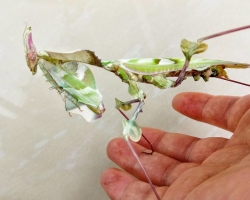In this article, we will tell you how to learn how to write numbers from 1 to 10 in words.
Content
By virtue of my great imagination, children can write numbers in a very unusual way or to start completely from the final point. But the point is not that there is some strict rule of writing numbers, their calligraphy depends on it.
It is very important that the child immediately learns to write according to the right scheme. Otherwise, the retraining will take much more time and your common nerves. Therefore, we want to offer you small secrets in the correct writing of numbers, the method of drawing by points and bright prints for training.
Learning to write numbers with a child with words from 1 to 10: Rules for writing numbers in a notebook in a cell by points
The desires of parents in this matter may not be enough. The age of the baby plays a very large role. If you start doing too early, then you will not achieve the desired result. And, in general, you need to adhere to some rules for both children and parents.
Choose the right age: when to proceed to classes?
Often, adults begin to deal with children from 3-4 years. After all, their child already knows numbers and, perhaps, even folds simple examples. But only orally. And now the idea arises to teach the child to write numbers in words. And the undertakings end in failures.
- Until 4 years old, the baby has not yet been properly formed by the idea of \u200b\u200bnumbers and the fine motor skills of the hands are not developed. Moreover, experts identify still small problems with the early development of the letter:
- the kid is not yet able to seize the technique of writing numbers, so it can not write them correctly;
- this can repel interest in school. After all, there the teacher will go through the material that he has long known;
- also, children still do not know how to hold the pen and sit at the desk.
- At this age, you only need to give an idea of \u200b\u200bnumbers. It is wonderful if you sculpt the numbers along with the dough or plasticine, as well as fold them from laces or beads. This will turn out a great warm -up before writing.
IMPORTANT: Until 5 years, do not demand from the child to write numbers in words. For young children, a simplified American manner of writing is suitable. That is, the deuce is written without a wavy “tail”, a seven without unnecessary dashes, and six and nine - without a wrapped hand.

- At the age of 5-7 years, the child also has not yet fully formed the muscles of the phalanges of the fingers and the brushes themselves. Therefore, do not overload the baby. Classes should not pass for more than 15-20 minutes. Otherwise, the child will get tired, the handwriting will deteriorate, and the desire to engage in completely disappears.
- Below we will provide templates by which the child will be able to circle each digit to the points, training his hand. The main thing is not to force and do not press on the child. With preschool children, any lesson should take place in a playful way or at least with some game elements. And you must finish the lesson with praise.
Note: checking the task of the baby, do not focus on negative moments. On the contrary, note how beautifully he wrote this or another figure. Draw in front of the correct number of the sun, an asterisk or flower. This will be an incentive for efforts when completing tasks in the future.
How to conduct a lesson?
- Before proceeding with the letter, learn numbers up to 10 with your child. This is a minimum, and at the age of 6-7 years, his knowledge should be much more. Moreover, the child must understand the meaning of each number, and not just memorize them.
- Explain to your child what a cell is and help to navigate in it. Also, by this age, the child should already know where up, the bottom, left and right side. Explain in detail and clearly where the center and various areas of cells are located. After all, each figure is written in its place. And give instruction that the figure does not go beyond the cell.
- The game “Squares” game helps to navigate the boxes. Or, as it is also called, a graphic dictation. Such classes help to study each side and angle of cells well.

- For preschool children, a slightly enlarged cell will be very appropriate. You can print a suitable stencil or draw yourself in a regular notebook. This is easy to do - take four cells as a basis instead of one. Such stencils will greatly simplify the understanding of where to write the right part of the number.
- But the child does not need to constantly write in a large format. Then it will be problematic to rebuild and fit into a tiny cell. Therefore, use such large cells only in the initial classes to understand the method of writing.
- After the child has learned the division of the cell into four parts, proceed to the spelling of ticks, “tails”, semicircles and dashes. Do not teach the child to write the number entirely! It will be relatively difficult for him. First draw separate components of the numbers, and only then “fasten” them together!
- If you want to accelerate the process of mastering uppercase numbers, except for classes, also carry out developing warm -ups. By the way, make sure that the child initially carefully and diligently perform tasks. He will not properly learn the lesson if he thinks, as if to cope with them faster. To run to do other things. This behavior will be difficult to worry in the future.
How to write the number 1?
- The first digit consists of two segments, which differs slightly in length. At first, it will be easier for the child to start drawing a unit from the center of the cell. But in the future, move the beginning a little up and closer to the right side.
- The head or base of the number is in the right corner itself. Therefore, take the line into this corner.
- Without rounding, without tearing your hands, make a sharp turn down. And continue to lead the line to the lower edge of the cell. The position of the final position should also be almost in the middle of the square, only 1-2 mm to the right.

How to write the number 2?
- The deuce consists of three parts - the upper half -ovar, an inclined line and a wavy “tail”. But it’s more convenient to train on two components. That is, a rounded head and “tail” are drawn.
- Start writing a figure in the center of the midline on the upper half of the cage. Try not to go beyond it, which is often problematic in children.
- In the upper right corner, a semi -oval is made, which is in contact with points about the middle of the upper and right line of the upper square.
- Then a smooth turn is drawn down the diagonally. A straight line is made (in the future, in the child it itself will “bend” a little up), which drops a little further than the middle of the lower line of the cage.
- To make it easier for the child to navigate in the position of the number 2, let the point of contact of the “head” and “tail” be in the middle of the lower edge.
- All actions are performed without tearing off their hands. The tail also continues this movement. It is made along the bottom of the right cell. A small wave is drawn, which rises and drops, and in the end again strives upward.
- The end of the "tail" should touch the right side slightly above its lower corner.

How to write the number 3?
- It consists of two semi -ovals. The upper should be slightly smaller, but do not require perfect execution from the child. In the future, when he understands the scheme of the letter, he will have his own handwriting of numbers.
- You need to start writing a triple slightly higher and to the right of the middle of the upper line. That is, the beginning above the point 2, and also a little shifted to the side.
- The first half -oval is drawn in the same way as in a deuce. There should be points of contact with the upper and right boundaries, but a little closer to the very corner. The upper oval is slightly smaller than the upper right square of the cell.
- The rounded line is wrapped, continuing the small oval. The point of contact or the middle of the number should be almost in the very center of the cage, but is a little right and higher.
- Another half -oval is done immediately from this point, but already larger. It can have two points of contact. The first point is the junction of the joint with the right side of the cell, a bit below its middle (but it is not necessary to bring it to the line at all). The second place of the joint is already mandatory - in the middle of the lower half of the cell.
- After the “tail” of the oval is finished, which goes up and a little to the left. Make sure that the baby does not lengthen him much. It should be only a few millimeters.

How to write the number 4?
- The four consists of their even lines and straight angles, but by children it is easily absorbed. Its beginning a little to the right of the middle of the upper line of the cell.
- A flat line is carried out, which is directed down and a little to the left. That is, she is under the slope.
- The next point is the connection of two lines at an acute angle (by the age of 6, the child should also master this material). Its location is slightly lower than the middle of the left side of the cell! Make sure that the child does not lower it too low.
- Next is an even segment to the right along the central line. But he does not reach the edge.
- The pen breaks and rises a little above the middle on the right side of the cell. The line is drawn, which will be parallel to the first segment. Try to immediately accustom the child so that these two lines are at one angle.
- It passes through a horizontal short line and reaches the lower border. An interesting remark - the end of the numbers are at the same level with its beginning, only below.
IMPORTANT: At first, it is better for a child to master a simplified option. Writing the four shifts in the middle of the cage. All actions are performed similarly, but the beginning coincides with the upper center, the horizontal line is drawn in the middle of the cell, and the third line begins with the upper right angle. That is, the beginning of the first and third segment will be at the same level.

How to write a number 5?
- A beautiful figure, but in children it often becomes the most problematic. It is divided into three parts, strictly stipulating and showing at the points of the border of each segment.
- A little to the right of the upper middle of the line is set the point of the beginning of the number 5. If exactly, then the upper square is divided into 4 more parts. And this point is almost in the middle (a little to the right) of the left upper face.
- A flat line is lowered, which stops almost in the very center of the cell (or slightly lower).
- And from this point, without tearing his hands, a wide circle is drawn. The line begins to rise, constantly rounding, circles the circle in the lower right square of the cage.
- The point of contact will be below, in the middle of the right half of the cell. From this point to the left and slightly up the short “tail” of the number is removed.

How to write the number 6?
- It begins from above! The start point is just below the upper right angle.
- A slight rounding up is made and a point of contact is created with the upper boundary of the right square. At about the same distance from the corner, a little not reaching the middle of the right half.
- Now the rounded line turns into a large oval, which falls into the bottom of the cell. Keep in mind that the oval should go a little beyond the central line. This protrusion begins almost in the middle of the cell.
- There is another contact in the middle of the lower half of the cell (it begins a little to the left). Continue to draw a circle, lifting it to the middle of the right side of the cell.
- Then draw a circle up, starting it above the central line. Around the center of the cell, finish writing the six, connecting it with the left side of the number.

How to write the number 7 correctly?
- Slightly below the middle of the upper central line, a point is placed. This will be the beginning of the seven. At a slight angle up and to the right, the segment rises, which ends on the upper line a little to the right of its middle.
- Now make the handle down and take it to the upper right corner. Without tearing your arms, sharply lower the straight line down. Lead it to the middle of the lower border.
- Tear off the handle and transfer it to the central line of the cell. You retreat a little to the right and make a dash through the “body” of the seven, crossing it.

How to write the number 8?
- The number 8 consists of their two drop -shaped ovals. Her beginning is a little peculiar. Again, the upper right square of the cell is visually divided into four parts. You need to work in the lower left square. Slightly above the midline and left of the visual center of the right upper half, a point is placed.
- The oval is drawn, which is in contact with the upper middle of the right square. It falls slightly lower and touches to the middle of the right side of the upper square.
- Now wrap it so that the line passes just below the start point. Go a little to the left of the central line in the lower half of the cell. Continue to draw a circle, touching the center of the lower part.
- Next, try to wrap the line so that the oval does not touch the right extreme side. Bring it and finish drawing at the original point.

How to write the number 9 correctly?
- In the middle of the upper right square on the outer line on the right, put a point. The oval is drawn that it is in contact with the middle of the same square, only on the upper line. Then it is started on the left side of the right cell, also making contact with the middle point.
- Now spend the oval through the center of the cells, lower below the midline. Do not reach the extreme side on the right and raise the oval up to the starting point.
- Without tearing your hands, you change the trajectory of movement, and go down. Almost along the right side of the cell, bring the line to the middle of the lower right square.
- You begin to wrap the “tail”, passing through the central point on the lower line of the right square. Take the segment a little up through the middle line.

How to write the number 0?
- Retreat a little down from the upper right angle. In the middle of the upper square, make a point of contact.
- Draw an oval a little under the slope. Spend only a slightly curved line through the center of the cell. Below its center, go to the left of the middle line.
- Wrap a circle and make another point of contact in the middle of the lower half.
- Now raise the oval along the extreme right wall of the cell and bring to the starting point.

Learning to write numbers: download and print in registrations
We present to your attention stencils with numbers that will help you and your child easily learn the material. At first, you need to circle the numbers more by points, then switch already to the use of only the main designations. And an important requirement - do regularly with your child! Try to complete the tasks in a playful way or conduct associations with numbers. For example, a four is an inverted chair, but the seven looks like a braid (just not a girl).

















